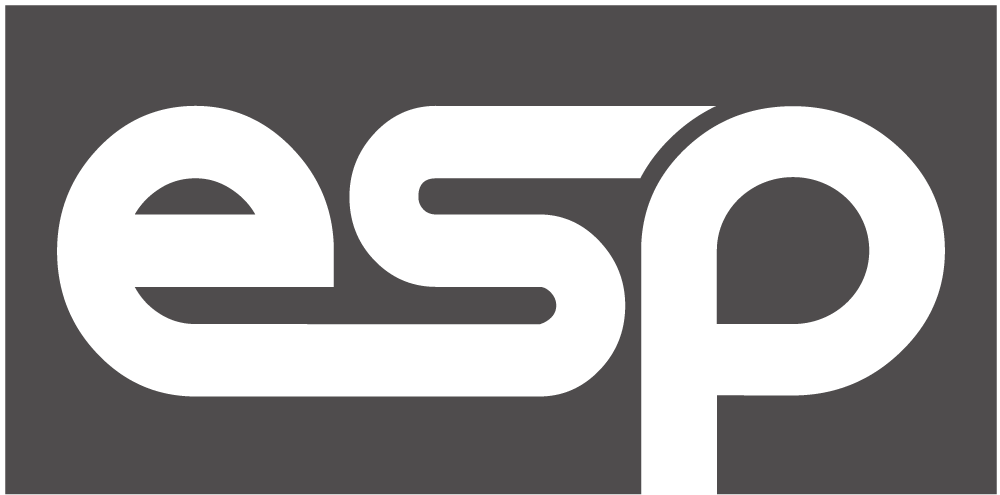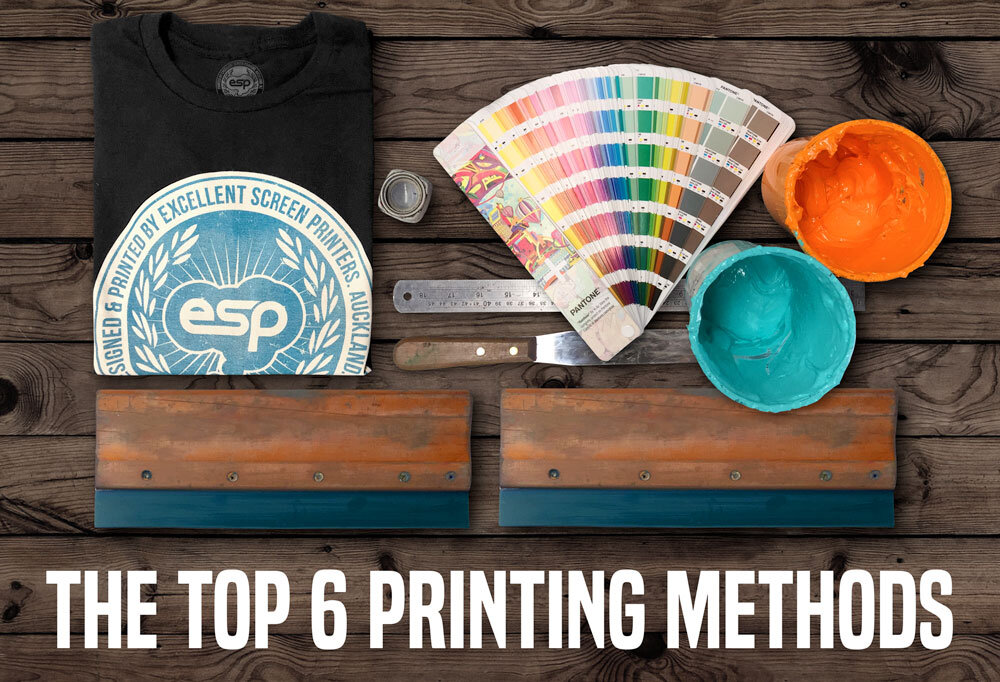The Top 6 T-Shirt Printing Methods
1) Screen Printing
Best for: Achieving a high-quality print at a low cost per shirt. (Print runs of 12 or more shirts)
Traditional screen printing often results in a much better print than direct to garment (DTG) printing. Softer and less of a "thick ink" feel.
Tips:
Ask for a “soft hand” print. This can be achieved with water-based ink or plastisol ink.
Ask to do a “press check” as your shirts are being printed. This will allow you and your screen printer to make last-minute adjustments with ink colours and printing quality.
Printing on premium 100% cotton ringspun cotton shirts will result in better prints (softer, better resolution, better colours) than a cheaper “carded cotton” shirt. For premium t-shirts, have a look at most AS Colour, Anvil or the Gildan Hammer Style
If your print requires an underbase, ask for a discharge underbase. This will bleach out the dye of the shirt fabric, so bright colours can be printed onto dark fabric. Resulting in a much softer print, compared to a thick white plastisol underbase.
2) Direct to Garment (DTG) Printing
Best for: Small print runs and Printing on Demand.
Direct to Garment Printing (Inkjet printing onto shirts) is not known for the best quality prints. It’s also not the most cost-effective kind of printing for large print runs.
But it is excellent if you need shirts printed in small quantities. This method is a favourite for drop shippers and business startups.
Another advantage with DTG printing is you don’t need to have colour separations made for your graphic. A transparent PNG image of your graphic is all your DTG print vendor will need.
Tips:
Send your design to ESPDTG to order as little as one shirt. This costs from around $35 per shirt.
Printing with no underbase on light fabric will often result in a print that looks and feels better than printing on a dark shirt.
3) Supacolour Digital/Screen Print Transfers
Best for: Ability to achieve high-quality prints with unlimited colours.
This method allows us to print unlimited colours and gradients and Supafine detail. Excellent stretch & rebound; no cracking or fading, even after 50+ washes. Can be used on almost any fabric and garment.
You can print a minimum of 20 transfers. Then we heat press the graphics to shirts as orders arrive.
4) Plastisol Heat Transfers
Best for: The ability to apply the graphic to your shirts as the orders come in. Low cost.
This method involves screen print your graphic onto sheets of transfer paper. The advantage is you can heat press the graphic in-house as orders arrive. No more committing your shirt inventory to specific graphics.
5) Vinyl Cut Heat Transfers
Best for: Small print runs.
Vinyl cutting is best for simple designs.
The biggest downside to vinyl cutting is the labour-intensive “weeding.” This is removing the excess vinyl after cutting. The more complex your design, the more you will have to manually peel away the unwanted areas of vinyl.
6) Printed Vinyl Cut Heat Transfers
Best for: Small print runs.
Similar to Vinyl cut transfers but using our high-end solvent printer to print your graphic before cutting
The biggest downside to printed vinyl transfers is the need for a border around any fine detail and cutting is the labour-intensive “weeding.” This is removing the excess vinyl after cutting. The more complex your design, the more you will have to manually peel away the unwanted areas of vinyl.
Based on Original Article from raydombroski.com

